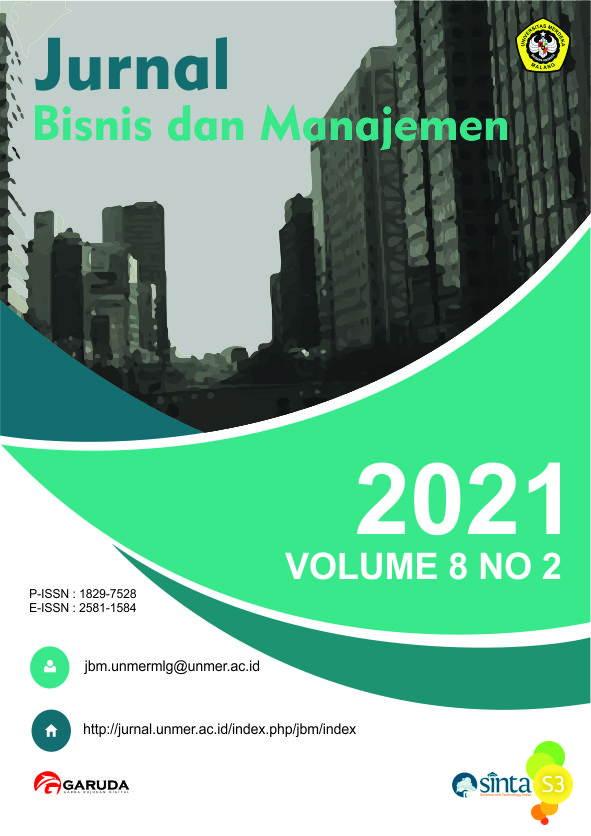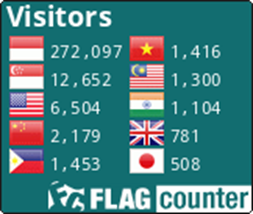Development Model of Rice Supply Chain Management to Ensure Self-Sufficiency and Food Security
DOI:
https://doi.org/10.26905/jbm.v8i2.6320Keywords:
Rice Supply Chain Management, Distribution Patterns, Food Supply Chain Networking (FSCN), Resilience and Self-SufficiencyAbstract
The objectives of this study cover not only the availability of information about potential rice production, the actual information of rice supply chain system, and the concept and strategy of the rice supply chain management but also the formulation of effective and efficient measures to increase the rice distribution chain linkages in Malang Regency. The study design is a combination of descriptive and policy research unit by applying analysis of Rice Milling Unit (RMU) Entrepreneurs, Wholesalers and Retailers, Farmers and stakeholders concerned. The sampling was carried out by non-probability sampling method. The first sampling used purposive sampling method, and then the snowballing sampling method. The data comprised two types of data, primary and secondary data. The primary data were obtained through direct observation and interviews. The secondary data were obtained through literary searches. The data processing was done by the framework of the Food Supply Chain Networking (FSCN). The results indicated that Malang Regency has successfully contributed to the increase of national unhulled rice production. Furthermore, every year Malang Regency has a surplus of rice. The rice distribution pattern consists of the rice traders, millers, wholesalers, Bulog Malang Sub Division, and retailers. The distribution pattern of rice in Malang Regency has five channels of trade distribution system. In general, the market structure of unhulled rice / rice in Malang Regency is competitive. It is characterized by a number of participants of the market not only at the village, district but Regency as well. The distribution pattern has been established and supported by adequate infrastructure. Moreover, the distribution is quite smooth without encountering any major obstacles. The results of this study provide interesting findings because the rice produced by farmers in Malang Regency is mostly sold outside Malang Regency. Most of the people of Malang Regency consume rice from other areas because the price is cheaper than the rice of Malang Regency farmers. This condition should improve the welfare of farmers because the rice produced is of premium quality and is more expensive, but market conditions make this expectation difficult to fulfill because the price is affordable at RMU. To Strengthen the supply chain management of rice, it is needed the growth and strengthening of the system either upstream or downstream of economy through institution of the village. The institution has a bridging function for both the interests and needs of the community. The government should provide sufficient funds through Bulog to buy all rice produced by farmers at a price that supports farmers in making a profit, then distribute it to the community at a price affordable to the purchasing power.
Downloads
References
Ahumada, O., & Villalobos, J. R. (2009). Application of planning models in the agri-food supply chain : A review. European Journal of Operational Research, 196(1), 1–20. https://doi.org/10.1016/j.ejor.2008.02.014
Aji, J. M. M. (2012). Rice supply chains in indonesia : how do they work ? Icam, (62), 473–488. Jember, Indonesia.
Anatan, L., & Ellitan, L. (2008). Supply Chain Management: Teori dan Aplikasi. Bandung: Alfabeta.
Aramyan, L., Ondersteijn, C., Kooten, O. V. A. N., & Lansink, A. O. (2006). Performance indicators in agri-food production chains. In Quantifying the agri-food supply chain (pp. 47–64).
Bala, B. K., Bhuiyan, M. G. K., Alam, M. M., Arshad, F. M., Sidique, S. F., & Alias, E. F. (2016). Modelling of supply chain of rice in Bangladesh. International Journal of System Science: Operations & Logistics, 2674(May). https://doi.org/10.1080/23302674.2016.1179813
Brown, J. G. (1994). Agroindustrial investment and operations. The World Bank.
Chopra, S., & Meindl, P. (2004). Supply chain management: strategy, planning, and operation (Vol. 232).
Collins, R., Dunne, T., & Keeffe, M. O. (2002). The "locus of value’': a hallmark of chains that learn. Supply Chain Management: An International Journal, 7(5), 318–321. https://doi.org/10.1108/13598540210447764
Dinu, M. D. (2016). Supply chain performance within agri food sector. Economics of Agriculture, 63(3), 919–928.
Firdaus, M., Baga, L. M., & Pratiwi, P. (2008). Swasembada beras dari masa ke masa : telaah efektivitas kebijakan dan perumusan strategi nasional (L. M. Baga & P. Pratiwi, Eds.). Bogor: IPB Press.
Guritno, A. D., Kristanti, N. E., & Tanuputri, M. R. (2018). Risk Mitigation on Supply Chain of Rice : Case Study at Demak and Sleman Districts. Agritech, 38(3), 375–380.
Harrison, A., & Hoek, R. Van. (2008). Logistics Management and Strategy: Competing through the supplu chain (Third Edit). England: Prentice Hall.
Lambert, D. M., Cooper, M. C., & Pagh, J. D. (1998). Supply Chain Management: Implementation Issues and Research Opportunities. The International Journal of Logistics Management, 9(2).
Lin, P., & Wu, L. (2011). How supermarket chains in Taiwan select suppliers of fresh fruit and vegetables via direct purchasing. The Service Industries Journal, 31(8), 1237–1255. https://doi.org/10.1080/02642060903437568
Nee, A. Y. H. (2008). Supply chain model for rice in malaysia – basics and challenges. ECER Regional Conference, (January).
Obura, J., Ombok, B. O., & Omugah, G. (2017). Analysis of Rice Supply Chain in Kenya. International Journal of Managerial Studies and Research, 5(8), 12–17.
Oliver, R. K., & Webber, M. D. (1982). Supply-chain management: logistics catches up with strategy. Outlook, 5(1), 42–47.
Poole, N., & Donovon, J. (2014). Building cooperative capacity : the specialty coffee sector in Nicaragua. Journal of Agribusiness in Developing and Emerging Economies, 4(2), 133–156. https://doi.org/10.1108/JADEE-01-2013-0002
Promme, P., Kuwornu, J. K. M., Jourdain, D., Shivakoti, G. P., & Soni, P. (2017). Factors influencing rubber marketing by smallholder farmers in Thailand. Development in Practice, 27(6), 865–879. https://doi.org/10.1080/09614524.2017.1340930
Saragih, J. P. (2016). Kelembagaan Urusan Pangan dari Masa ke Masa dan Kebijakan Ketahanan Pangan. Jurnal Ekonomi & Studi Pembangunan, 17(2), 168–192. https://doi.org/10.18196/jesp.17.2.3983
Sathapatyanon, J., Kuwornu, J. K., Shivakoti, G. P., Soni, P., Anal, A. K., & Datta, A. (2018). The role of farmer organization and network in the rice supply chain in Thailand. Journal of Agribusiness in Developing and Emerging Economies.
Sharma, V., Giri, S., & Rai, S. S. (2013). Supply chain management of rice in india : a rice processing company’s perspective. International Journal of Managing Value and Supply Chain, 4(1), 25–36. https://doi.org/10.5121/ijmvsc.2013.4103
Shukla, M., & Jharkharia, S. (2013). Agri-fresh produce supply chain management : a state-of-the-art literature review. International Journal of Operations & Production Management, 33(2), 114–1158. https://doi.org/10.1108/01443571311295608
Simchi-Levi, D., Kaminsky, P., Simchi-Levi, E., & Shankar, R. (2008). Designing and managing the supply chain: concepts, strategies and case studies. Tata McGraw-Hill Education.
Sudaryanto, T. (2013). Rice Development Policy in Indonesia. FFTC Agricultural Policy Platform, 1–3.
Timsina, K. P., Bastakoti, R. C., & Shivakoti, G. P. (2016). Achieving strategic fit in onion seed supply chain. Journal of Agribusiness in Developing and Emerging Economies, 6(2), 127–149.
Van Der Vorst, J. G. A. J. (2006). Performance measurement in agri-food supply-chain networks. In Quantifying the agri-food supply chain (pp. 15–26).
Yan, M., Terheggen, A., & Mithofer, D. (2017). Who and what set the price of walnut for small-scale farmers in Southwesst China? Journal of Agribusiness in Developing and Emerging Economies, 7(2), 135–152.
Downloads
Published
How to Cite
Issue
Section
License
Authors who publish with this journal agree to the following terms:
(1) Copyright of the published articles will be transferred to the journal as the publisher of the manuscripts. Therefore, the author confirms that the copyright has been managed by the journal.
(2) Publisher of Jurnal Bisnis dan Manajemen is University of Merdeka Malang.
(3) The copyright follows Creative Commons Attribution–ShareAlike License (CC BY SA): This license allows to Share — copy and redistribute the material in any medium or format, Adapt — remix, transform, and build upon the material, for any purpose, even commercially.














